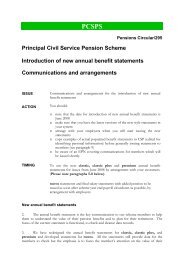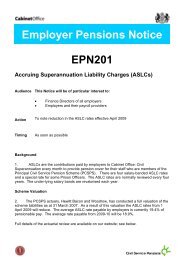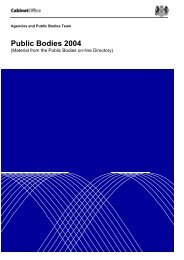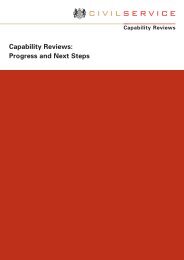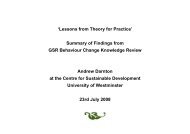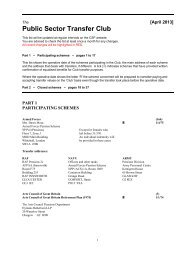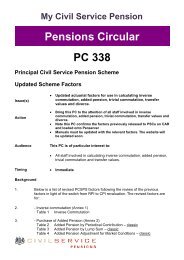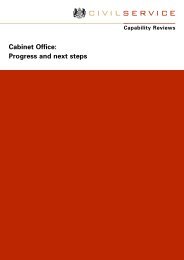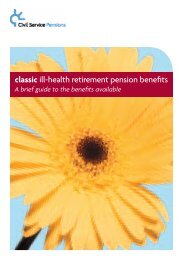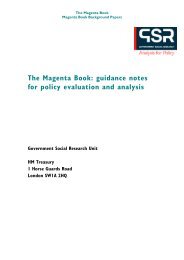Job Evaluation Good Practice Guide - The Civil Service
Job Evaluation Good Practice Guide - The Civil Service
Job Evaluation Good Practice Guide - The Civil Service
You also want an ePaper? Increase the reach of your titles
YUMPU automatically turns print PDFs into web optimized ePapers that Google loves.
<strong>The</strong> write up should avoid: judgmental or general statements withoutsupporting evidence; unnecessary terminology and jargon; and genderreferences - all of which could give an unfair slant on the actualresponsibilities of the role.<strong>The</strong> written evidence is likely to be more accurate if it is done as soon aspossible after the JEGS interview. Avoid banking up interviews for writing up.<strong>The</strong> write up should be sent to the role holder and their line manager to “signoff” the accuracy of the evidence before evaluating the role. It will then havethe status of an agreed job description.Analysis<strong>The</strong> additional guidance/examples in the JEGS booklet (the left hand pages)can be developed to better reflect the business of your organisation. Anyrevisions to the JEGS handbook should be approved within the organisation(e.g. by the steering/working group) and by the Cabinet Office. <strong>The</strong> CabinetOffice holds additional ‘left hand’ guidance which may be of use whenevaluating specialist roles (e.g. lawyers and curators).As analysts become more experienced in the use of JEGS, internal standardsof application for each of the JEGS factors will develop. To ensure thatcurrent and future JEGS analysts are consistent in applying these standards,it is essential that they are recorded. <strong>The</strong> most efficient way of doing this is toamend/add to the left hand guidance of the JEGS booklet.Avoid “double counting” - i.e. giving credit for the same specific aspect of arole in more than one factor.Use the JEGS software challenge facility to check for possible inconsistenciesbetween the factors and as a prompt for rechecking the evidence used for thequestion responses. Do not, however, amend assessments simply to reducethe number of challenges.For all responses – not just those that are protected explicitly by legislation,your judgement must be defensible, realistic and auditable. It should bepossible to independently follow the evidential steps that led to yourassessment and choice of response, especially where legislation is (rightly)likely to attract acute attention, and particularly if your assessment is at the topof the range.Quality AssuranceBuild cross-marking into the analysis process (i.e. get second opinions fromother analysts based on the JAF and the write up). <strong>The</strong> analysts should thendiscuss and agree on the final assessment.Group evaluations can help in achieving balanced assessments. <strong>The</strong>y arealso useful for maintaining standards of application across evaluators. Groupevaluations can be particularly beneficial in the early days of using JEGS, or ifyou have a new intake of analysts.8




